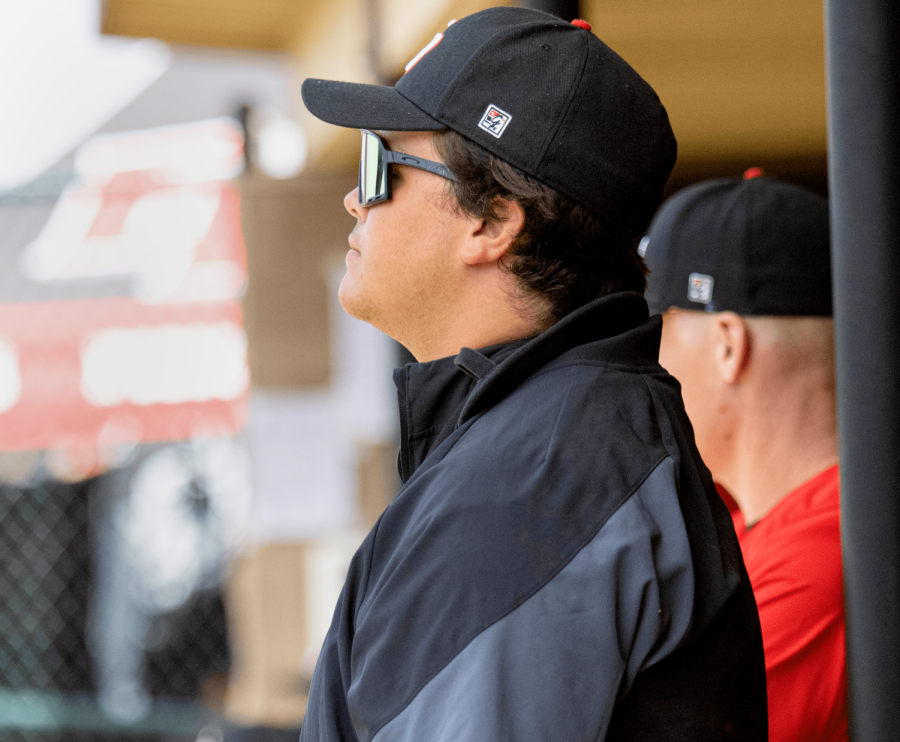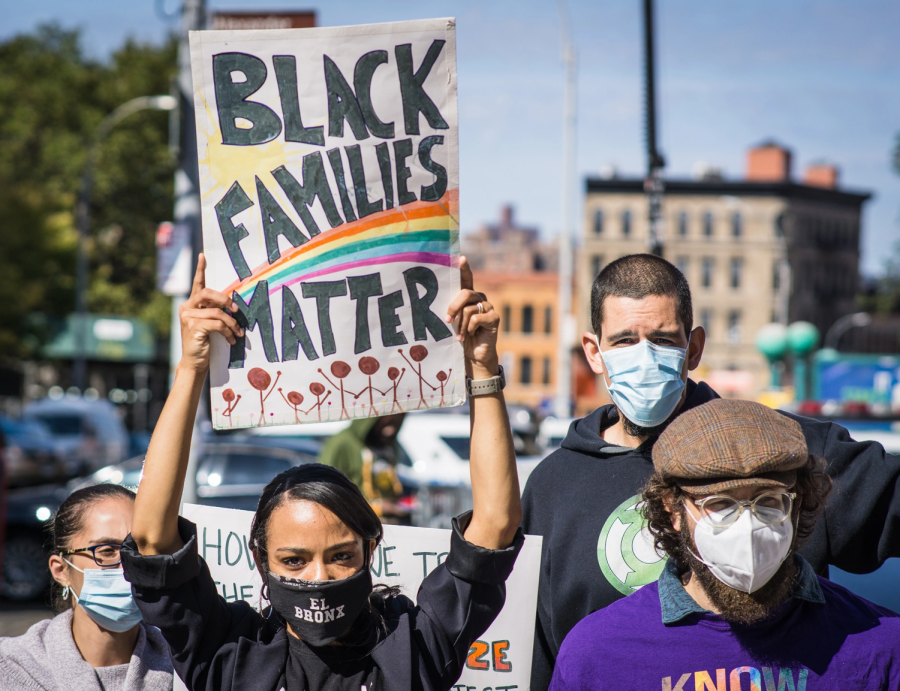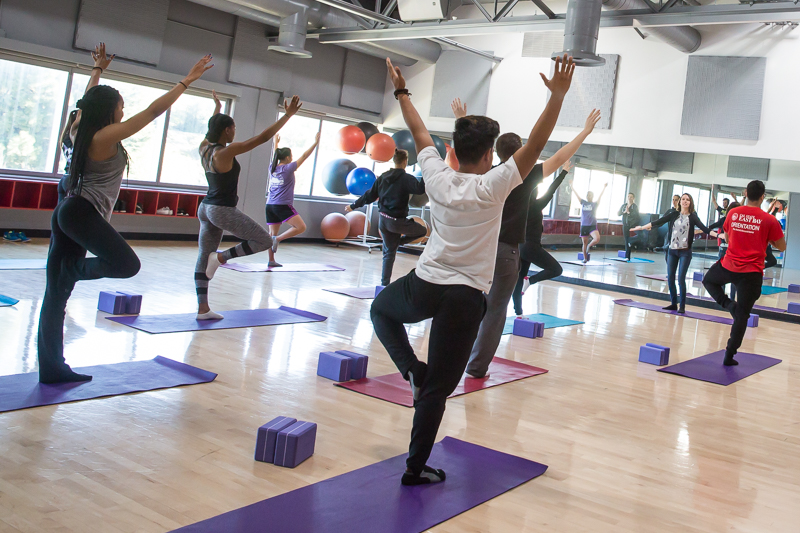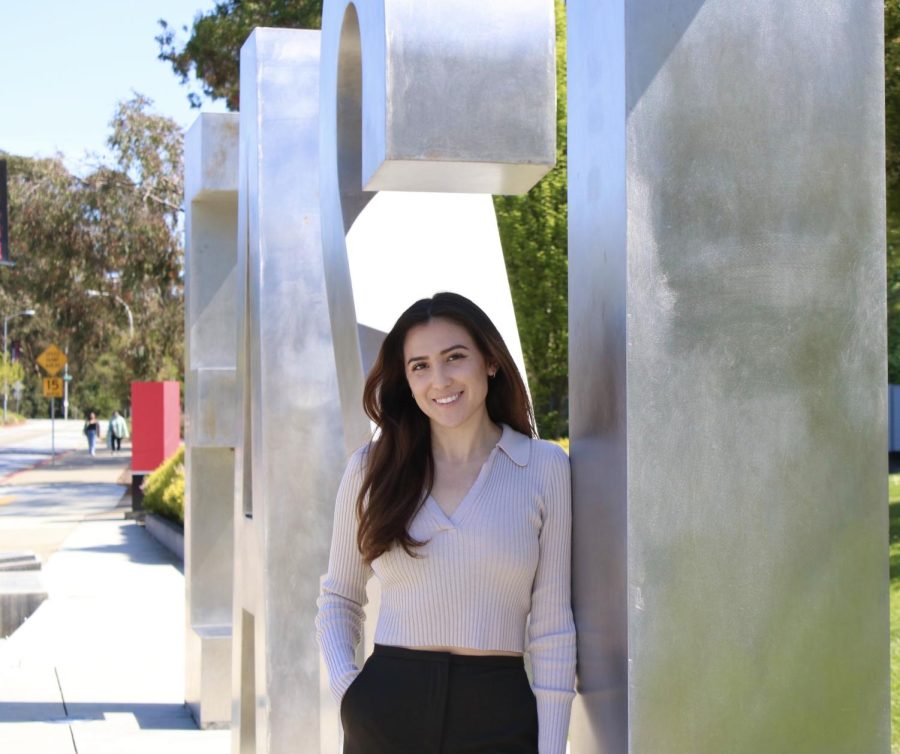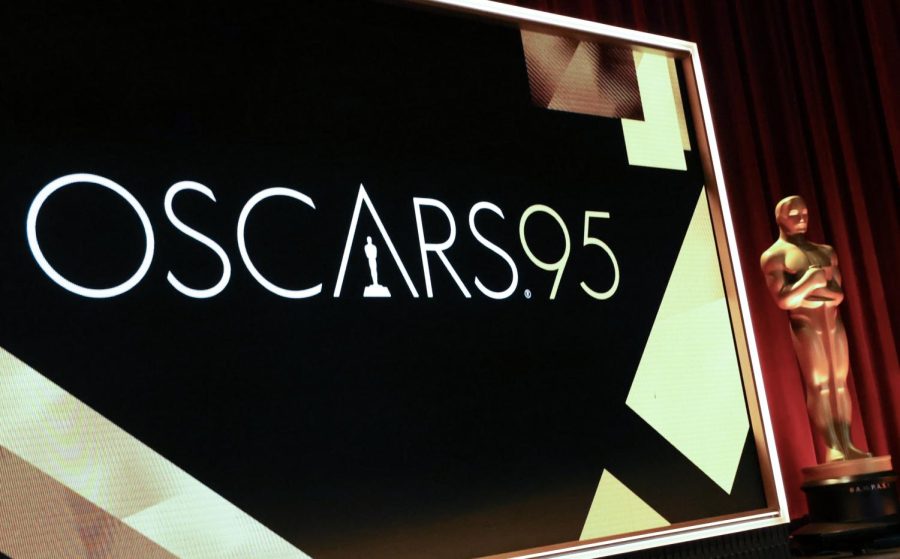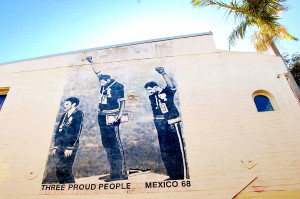
podium, painted on the side of a house in Newtown,
Sydney.
He was the invisible man.
He stood, frozen in place, in the middle of a stadium crammed with thousands of shocked spectators, while the eyes of the world were transfixed on two young African-American sprinters with their fists raised in protest. At that moment, a pin dropping would have sounded like an earthquake.
They stood together in open defiance of racism, despite threats by the International Olympic Committee and the U.S. athletics team that any athletes involved in a political protest would be thrown out of the games.
Now, 45 years after the iconic ‘black power salute’ at the 1968 Mexico Olympics, many sports fans are unaware of a central figure in the protest.
Peter Norman, the third pillar in one of the most powerful and enduring images of the 20th century, has largely been forgotten.
He had just run the Olympic final of the 200 meters in the scintillating time of 20.06 seconds, the fastest time ever by a sprinter from the southern hemisphere, only to be beaten by his brilliant American counterpart, Tommie Smith.
Smith and his teammate, John Carlos, were supposed to finish first and second, nothing could stop them.
Norman had pulled off the impossible, to split the two fastest men on the planet over 200 meters.
After the race, he sat in the corner of the locker room, trying to relax himself before the medal presentation; then the other medalists Smith and Carlos approached him. In the interest of fair warning, the two men shared with Norman what they were planning. Then they asked Norman: “Do you believe in human rights?”
He told them he did.
“Do you believe in God?” they asked.
Norman, who had worn a tracksuit with the words “God is Love” as a young athlete, answered yes.
They warned Norman about the chances of repercussions, and the death threats they had received. They gave him the option to step off the podium, to protect his own interests.
“I’ll stand with you,” he said.
The three men would take to the victory podium together. But when Carlos realized he had left his gloves behind, Norman suggested the pair wear one glove each.
It could have easily been one fist in the air that night, not two.
Before they walked out to the dais, Norman acquired a badge for the Olympic Project for Human Rights from a member of the US rowing team, to match the ones worn by Smith and Carlos. He was now committed to being an active part of the protest that would cement his place in history.
After they received their medals, they turned to face their respective flags. The moment the first note of The Star-Spangled Banner struck, Tommie Smith and John Carlos, bowed their heads and thrust their gloved fists into the air.
Norman did not flinch, but he knew from the eerie silence that they had followed through.
Their heads were bowed in respect for those who had sacrificed for the civil rights movement, the clenched fists were symbolic of strength and unity, and the black socks on their feet represented the poverty suffered by their African-American brothers and sisters.
But that was not how the press explained it in the weeks that followed. The fists were viewed as a threat, a sign of aggression. The act was described as a political protest that had no place in the Olympic games. The International Olympic Committee and the media stuck to the idea that sport and politics take place in separate spheres and must never intersect.
Time Magazine replaced the Olympic motto with “Angrier, Nastier, Uglier,” and described the act as “a public display of petulance that sparked one of the most unpleasant controversies in Olympic history and turned the high drama of the games into theater of the absurd.”
Smith and Carlos were sent home and banned from the Olympics for life. Smith, the Olympic champion and holder of multiple world records, struggled to find work when he returned and ended up washing cars for a living.
“People were either alive at these guys or they were angrier than angry, and that kind of visceral anger was just devastating for them,” said Professor Rita Liberti, a sports historian at CSU East Bay.
“They were scorned and chastised for what they did; it must have taken not only a financial toll on them, but a psychic toll as well,” she said.
Australia has its own history of institutionalized racial persecution and, when he returned to his home country far from the eyes of the world’s press, Norman suffered a similar, though less public fate.
While his circumstances may have been better by virtue of his color – he never faced physical danger – he was ostracized by the Australian athletics community and vilified by the press. Despite being the fastest man in the country and meeting all the qualifying requirements, he was denied a place on the Australian team for the 1972 Munich Olympics. Instead, Australia sent no sprinters to the games. In response, Norman retired from athletics.
Athletes work their whole life for the chance to stand on the victory podium at the Olympic games. In 1968, Smith, Carlos, and Norman sacrificed their moment of glory and the rest of their athletic careers for the good of the cause.
The significance of the protest is often overlooked because it happened in the sporting arena. Professor Liberti believes the three runners deserve the same recognition as other civil rights activists.
“For the three of them to carry out an act of defiance at that moment, it’s beyond courageous.
“And that’s why all three of them should be considered civil rights agents, they were agents of change, but they’re still relegated to the ‘sports thing’. But it’s bigger than sport, it was an act of courage, it was an act of resistance and it was a strong civil rights action.
“It’s so easy just to cast it as a politics in sport thing, but it wasn’t. It just happened to be in sport. If we’re going to admire Rosa Parks, it’s what she deserves, and countless others who paved the way, then these three men, their action needs to be treated with the same kind of respect and credibility. It’s almost like because it happened in sport it got less credibility,” said Liberti.
Norman also disagreed with the outdated notion that sport and politics existed only as separate entities.
“I’m a firm believer that, in a victory ceremony for the Olympics, there’s three guys that stand up there, each one’s been given about a square meter of God’s earth to stand on, and what any one of the three choose to do with his little square meter of earth on that stage is entirely up to them,” he said in “Salute,” a documentary written and directed by his brother, Matt Norman.
“I believe in human rights. The fact that we were in different teams, our skins were different colors, didn’t make that much difference,” said Norman.
Even by the year 2000, when Australia hosted the Sydney Olympics, often called the best games ever, the wounds had not healed. Norman, one of Australia’s greatest athletes was not invited to the opening ceremony for the Olympic games held in his own country.
The American track team was horrified when they found out. They gave Norman an invitation to the opening ceremony and to Michael Johnson’s birthday party on the eve of the ceremony. When he arrived at the party, Norman introduced himself to the duel world record holder. Johnson embraced him and said, “I know who you are, you’re my hero.”
On Oct. 3, 2006, Peter Norman passed away at the age of 64. The US Track and Field Federation declared Oct. 9, the day of his funeral, as Peter Norman Day. Smith and Carlos were both pallbearers at the service.
Speaking at the funeral, Carlos said he expected to see fear in Norman’s eyes when he warned him of the protest.
“I saw love. Peter never flinched,” he said. “He never turned his eyes, he never turned his head. He never said so much as ‘ouch’. You guys have lost a great soldier.
“I could shield myself with Tommie Smith. Tommie Smith could shield himself with John Carlos. But whom could Peter Norman shield himself with? He was a lone soldier.”
The Australian Government issued a posthumous official apology to Norman saying, “for the treatment that he received upon his return to Australia and for the failure to fully recognize his inspirational role before his untimely death in 2006,” on Oct. 11, 2012.
So Wednesday, October 16, wherever you may be, spare a thought for the two brave American athletes who sacrificed their promising careers for human rights, and for their late Australian friend who joined them on the dais that day because it was “the right thing to do,” without so much as a second thought.
Norman’s time of 20.06 would have won him the gold medal at the Sydney 2000 Olympics and remains the Australian record. Typical of his character, he never complained about his treatment.





